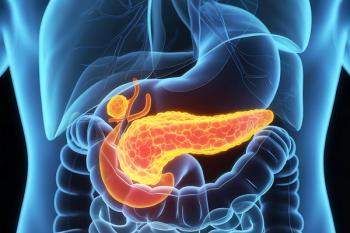
- The Column-02-04-2015
- Volume 11
- Issue 2
Investigating the Origin of Life
Ten aldehydes have been discovered in simulated interstellar ice that could be the precursor to comets and other extraterrestrial bodies.
Volume 11, Issue 2, p8
(Photo Credit: Dirk Freder/Getty Images)
Ten aldehydes have been discovered in simulated interstellar ice, a precursor to comets and other extraterrestrial bodies, according to an article in Proceedings of the National Academy of Sciences.1 The authors performed multidimensional gas chromatography coupled with time-of-flight mass spectrometry (GC×GC–TOF-MS) to detect the aldehydes, two of which are potential intermediates in the synthesis of ribonucleotides that could have been responsible for the origins of life on Earth.
One of the biggest questions facing scientists is how did life begin on Earth? One theory is that the basic building blocks for life were delivered by a comet or meteorite. To investigate this possibility, a team of researchers based in France is simulating the evolution of interstellar ice thought to be a precursor of pre-cometary materials. Corresponding author Cornelia Meinert told The Column: “Several amino acids - the monomers of our proteins - were detected in meteorites and in ice simulation experiments by our team. However, sugars - the chiral monomers of our DNA/RNA - have not yet been detected in space, meteorites, and/or in laboratory-produced interstellar ices.”
Interstellar ices are simulated in the laboratory by placing a mixture of representative molecules such as H2O, CH3OH, and NH3 in a high vacuum chamber while irradiating with ultraviolet (UV) photons.2 The resulting ices are then warmed to room temperature and analyzed by performing GC×GC–TOF-MS. The analysis detected 10 aldehydes, a new family of molecules, that can be intermediates in the synthesis of genetic material. Of particular importance were the presence of glycolaldehyde and glyceraldehyde that according to Meinert are essential for the formation of ribonucleotides. The structure of DNA is a chiral, right-turning helix opposed to left turning because the ribose sugar is a D-ribose.3 Meinert told The Column: “Glyceraldehyde is also chiral and D-glyceraldehyde is the precursor of RNA with D-ribose (the biological RNA), whereas L-glyceraldehyde is the precursor of RNA with L-ribose (the non-natural RNA). In short: The chirality of the glyceraldehyde controls whether DNA shows a right or left double helix!”
Uwe Meierhenrich, co-author of the published study, is also coâinvestigator of the instrument used on the Rosetta lander Philae named “COSAC” (for cometary sampling and composition). Meinert told The Column that after the landing on comet 67P/CG in November 2014, COSAC recorded a gas chromatogram with 426 mass spectra. “The team is now trying to identify organic molecules in COSAC’s chromatogram and mass spectra that were recorded on the comet. The molecules now described in PNAS help in this endeavour.” She added: “Please note the COSAC is the first instrument ever that was sent to space to investigate the phenomenon of chirality. The chirality aspect is assumed to open space research to chemists, biochemists, and biologists, which widens our audience.” - B.D.
References
1. P. de Marcellus, C. Meinert, I. Myrgorodska, L. Nahon, T. Buhse, L. Le Sergeant d’Hendecourt, and U.J. Meierhenrich, Proceedings of the National Academy of Sciences of the United States of America, DOI: 10.1073/pnas.1418602112 (2014).
2. C. Meinert, J-J. Filippi, P. de Marcellus, L. Le Sergeant d’Hendecourt, and U.J. Meierhenrich, ChemPlusChem 77, 186–191 (2012).
3. M.W. Powner, B. Gerland, and J.D. Sutherland Sutherland, Nature459, 239–242 (2009).
Articles in this issue
almost 11 years ago
Green Tea Analysis Using UHPLC–QqQ–MS–MSalmost 11 years ago
Detecting New Psychoactive Substances in Hairalmost 11 years ago
Tips & Tricks GPC/SEC: Calibration Using Broad Standardsalmost 11 years ago
Pittcon Hits The Big Easyalmost 11 years ago
Vol 11 No 2 The Column February 04, 2015 Europe and Asia PDFalmost 11 years ago
Vol 11 No 2 The Column February 04, 2015 North American PDFalmost 11 years ago
Powerful Protein Characterization Using Capillary ElectrophoresisNewsletter
Join the global community of analytical scientists who trust LCGC for insights on the latest techniques, trends, and expert solutions in chromatography.





